
Vitamin A is an essential vitamin required for vision, gene transcription,boosting immune function, and great skin health. A deficiency in vitamin A can lead to blindness and increased viral infection, however deficiency is only considered a problem in developing countries where it is a leading cause of blindness in children. Over consumption of vitamin A can lead to jaundice, nausea, loss of appetite, irritability, vomiting, and even hair loss. The current recommended daily allowance for Vitamin A is 5000 international units (IU). Below is a list of foods high in Vitamin A.
#1: Liver (Pâté)

The liver of any animal is packed with vitamins and minerals, and is best prepared steamed or fried with onions and herbs. Turkey liver provides the most vitamin A with 75333IU (1507% RDA) per 100 gram serving, or 62526IU (1250% RDA) per liver. The liver of most any animal will provide 1000%+ RDA of vitamin A. A single tablespoon of pâté will provide 429 IU (9% RDA) of vitamin A.
#2: Paprika, Red Pepper, Cayenne, Chili Powder

A tablespoon of paprika contains 3691IU (74% RDA) for vitamin A, or 52735 IU (1055% RDA) for a 100 gram serving. Other red pepper powders have similar amounts with Cayenne powder providing 41610 IU (832% RDA) per 100g or 2081IU (42% RDA) in a single tablespoon.
#3: Sweet Potatoes
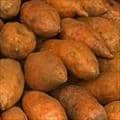
With their bright orange color sweet potatoes are packed with vitamin A. Sweet potatoes provide 19218IU (384% RDA) of vitamin A per 100 gram serving, or 38436IU (769% RDA) in a cup of mashed sweet potato, and 21909IU (438% RDA) in a medium sized sweet potato.
#4: Carrots
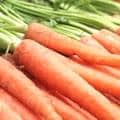
Carrots are excellent cooked or as a snack. 100 grams of raw carrots provides 16706IU (334% RDA) for vitamin A. That is 10191IU (204% RDA) for a medium sized carrot, and 2069IU (41% RDA) for a single baby carrot.
#5: Dark Leafy Greens
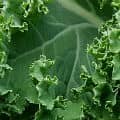
Crisp, fresh, and delicious, dark leafy greens are great in a salad or steamed as a side. As a bonus they are also high in calcium. Kale provides the most vitamin A with 15376IU (308% RDA) per 100g serving, 10302IU (206% RDA) per cup. It is followed by Turnip Greens (232% RDA), Mustard Greens (210% RDA), Dandelion Greens (203% RDA), Spinach (188% RDA), and Collards (133% RDA).
#6: Butternut Squash
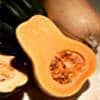
Dark orange squash has a delicious nutty and sweet flavor. 100 grams baked provides 11155IU (223% RDA) of vitamin A, or 22868IU (457% RDA) per cup.
#7: Dried Herbs
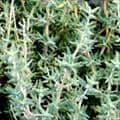
Dried herbs are so packed with vitamins they appear on practically every HealthAliciousNess Top 10 list. Make it a habit to add a pinch of dried herb to everything you prepare. Dried Parsley provides the most vitamin A with 10184IU (204% RDA) per 100 gram serving, or 204IU (4% RDA) per tablespoon. It is followed by Dried Basil (188% RDA), Dried Marjoram (161% RDA), Dill (154% RDA), and Oregano (138% RDA).
#8: Lettuce
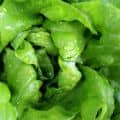
The kind of lettuce matters when it comes to vitamin A content. Dark colorful lettuces provide the most vitamin A with Red and Green Leaf lettuces providing 7492IU (150% RDA) per 100 gram serving, 2098IU (42% RDA) per cup shredded, and 1274IU (25% RDA) per leaf. Iceberg only provides 502IU (10% RDA) per 100g, 361IU (7% RDA) per cup shredded, and 75IU (2% RDA) per leaf.
#9: Dried Apricots
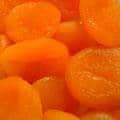
Dried apricots are a great portable snack food. 100 grams will provide 3604IU (72% RDA) of vitamin A, which is 4685IU (94% RDA) per cup, and 144IU (6% RDA) per dried apricot.
#10: Cantaloupe
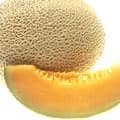
Cantaloupe and other yellow/orange melons are a great source of vitamin A. Cantaloupe provides 3382IU (68% RDA) of vitamin A per 100 gram serving. That is 5986IU (120% RDA) per cup of mellon balls, or 2334IU (47% RDA) in a medium sized wedge.
Other Vitamin A Rich Foods
| Papaya | 1094IU (22% RDA) per 100 gram serving | 1532IU (31% RDA) per cup cubed (140 grams) | 1663IU (33% RDA) per small papaya (152 grams) | Click to see complete nutrition facts for Papaya |
| Mangoes | 765IU (15% RDA) per 100 gram serving | 1262IU (25% RDA) per cup sliced (165 grams) | 1584IU (32% RDA) in an average mango (207 grams) | Click to see complete nutrition facts for Mangoes |
| Green Peas | 2100IU (42% RDA) per 100 gram serving | 3360IU (68% RDA) per cup (160 grams) | 1680IU (34% RDA) in a half cup (80 grams) | Click to see complete nutrition facts for Cooked Green Peas |
| Tomatoes | 833IU (17% RDA) per 100 gram serving | 1499IU (30% RDA) per cup chopped (180 grams) | 1025IU (20% RDA) in an average tomato (123 grams) | Click to see complete nutrition facts for Red Ripe Tomatoes |
| Peaches | 326IU (7% RDA) per 100 gram serving | 502IU (10% RDA) per cup sliced (154 grams) | 489IU (10% RDA) in a medium sized peach (150 grams) | Click to see complete nutrition facts for Raw Peaches |
| Red Bell (Sweet) Peppers | 3131IU (63% RDA) per 100 gram serving | 4665IU (93% RDA) per cup chopped (149 grams) | 3726IU (75% RDA) in a medium sized pepper (119 grams) | Click to see complete nutrition facts for Raw Red Bell Peppers |
| Fortified Skim (Non-Fat) Milk* | 204IU (4% RDA) per 100 gram serving | 500IU (10% RDA) per cup (245 grams) | 63IU (1% RDA) in a fluid ounce (31 grams) | Click to see complete nutrition facts for Fortified Skim Milk |
| Whole Milk | 102IU (2% RDA) per 100 gram serving | 249IU (5% RDA) per cup (244 grams) | 32IU (1% RDA) in a fluid ounce (31 grams) | Click to see complete nutrition facts for Whole Milk |
| Oatmeal (Fortified) | 621IU (12% RDA) per 100 gram serving | 1453IU (29% RDA) per cup (234 grams) | 272IU (14% RDA) in a half-cup (117 grams) | Click to see complete nutrition facts for Instant Fortified Oatmeal |
Health Benefits of Vitamin A
- Increased Protection from Bacterial and Viral Infections - Vitamin A is essential for healthy surface linings of the eyes, mucous membranes, respiratory, urinary, and intestinal tracts.3-6
- Proper Immune Functioning - Vitamin A is essential to regulate the immune system, and plays a key role in making white blood cells which fight off infections in the body.4,5,7-9
- Cancer Protection (*Food Sources Only) - Studies suggest beta-carotene and vitamin A lower risk of many types of cancer.10 This effect could mainly be from a diet high in vegetables and not from supplements. Vitamin A supplements have been shown to increase risk of cancer.11-13
High Risk Groups for a Vitamin A Deficiency
- Vegetarians and Vegans - Vegetarians and vegans who do not eat eggs and dairy foods need to consume at least 5 servings of either dark leafy greens or orange and yellow fruits and vegetables to meet their vitamin A needs.
- People with Long Term Problems Absorbing Fat - Problems absorbing fat in the long term can lead to diarrhea and vitamin A deficiency. This includes people with:
- Celiac disease - Gluten Intolerance
- Crohn's disease - Inflammatory Bowel Disease
- Pancreatic disorders - The pancreas releases enzymes for proper digestion of fats

0 comments:
Post a Comment